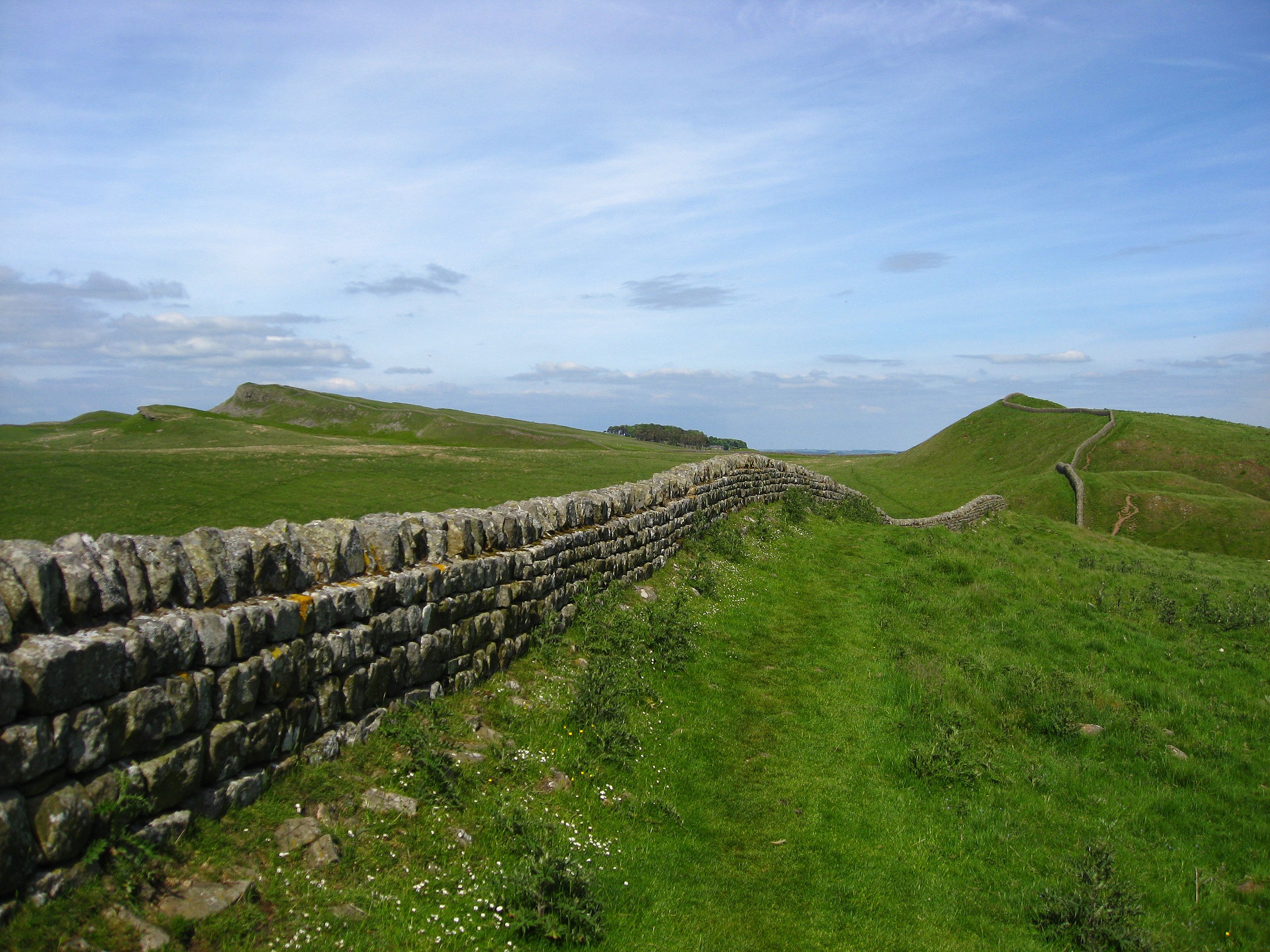Roman Frontier Systems in Britain “Having completely transformed the soldiers, in royal fashion, he [Hadrian] made for Britain, where he set right many things and – the first to do so – drew a wall along a length of eighty miles to separate barbarians and Romans.”
Aelius Spartianus’ Life of Hadrian (XI.i), translated by Anthony Birley
Although we have much epigraphic evidence from the Wall itself, the sole classical literary reference for Hadrian having built the Wall is the passage above, written towards the end of the 3rd century AD. The concept of a continuous barrier across the Tyne-Solway isthmus was devised by emperor Hadrian during his visit to Britain in 122AD. His visit had been prompted by the threat of renewed unrest with the Brigantes tribe of northern England, and the need was seen to separate this war-like race from the tribes of lowland Scotland, with whom they had allied against Rome during recent troubles.
His original idea was to build a stone wall 10 feet wide and 15 feet high, fronted by a wide ditch and counterscarp bank, all the way from Newcastle-upon-Tyne to Bowness-on-Solway, a distance of eighty Roman miles. Each mile was punctuated by a small garrison fortlet with the interval between each of these milecastles having two evenly-spaced watch-towers or turrets. In its original format the garrison manning the Wall and its defences would be supplemented by the forts already in existence along the Stanegate to its rear.
This arrangement was soon seen to be untenable, the forts along the old military road being stationed too far behind the Wall to respond effectively in its defence, so the decision was made to install new purpose-built forts upon the line of Wall itself, in some instances (q.v. Birdoswald, Bowness) being built over milecastles whose foundations had already been laid. These forts, eighteen in number, were spaced more-or-less evenly along the length of the barrier; infantry forts lying wholly behind the rampart-wall while cavalry forts straddled the line. They were linked by a road, the Military Way, to the immediate rear of the rampart.
Soon after the Wall was completed a military exclusion zone was created behind it by the building of the ‘vallum’, a linear earthwork consisting of two earthen mounds with a median ditch which mirrored the progress of the Wall from Newcastle to Bowness, being curiously missing from the four-mile section in the east between Newcastle and Wallsend (Segedunum). The frontier was also extended south-westwards where the remains of a timber palisade and ditches backed by forts, fortlets and watchtowers have been recorded along the Cumbrian coast as far as least as far as Burrow Walls, near Workington, possibly as far as Moresby, just north of Newhaven; nowadays known as the ‘Western Sea Defences’, it is possible that some of the larger forts were established during Flavian or Trajanic times. Incidentally, these were Rome’s first saltwater frontier defences. (q.v. Embleton & Graham; Jones & Woolliscroft)
Hadrianic Frontier Fortifications on the Continent
“During this period, and frequently at other times, in a great many places where the barbarians are separated off not by rivers but by frontier-barriers, he [Hadrian] set them apart by great stakes driven deep into the ground and fastened together in the manner of a palisade.”
Aelius Spartianus’ Life of Hadrian (XII.iv), translated by Anthony Birley
The above passage shows not only the Roman predeliction of arranging frontiers along river-banks, but also of the change in frontier policy instigated by Hadrian, whereupon the empire was delimited by physical linear barriers, not just in Britain, whose Hadrianic system surpassed anything on the continent, but also in Germany where the Trajanic system of patrol roads backed by a series of watch-towers and forts was now supplemented by the addition of a stout timber palisade fronting the existing fortifications for a total length of some 200 miles, for the most part through thinly-populated forest. The ‘German pale’ was not made of arm or leg-width branches, but of sharpened and fire-tempered tree-trunks, there being timber in profusion.
The signal-stations of the Rhine-Danube frontier consisted of square timber-built towers surrounded by ring-ditches, reminiscent of the single-ditched examples along the Gask Ridge, an improvement here however, observed in some of the towers the lower floor was of drystone-walling braced with timber and filled with earth, removing the entrance from ground level while making the base of the structure more resilient to battering-rams. Also in Dacia, Hadrian authorised a “beefing-up” of defences along the line of the Olt in order to contain the Rhoxolani on the opposite bank between the Olt and the Danube. Here, timber forts were replaced in stone (or brick in the alluvial south), and a patrol-road along a 150 mile front added, there being no need of a palisade in view of the river.
The Wall across northern Britain is estimated to have had a garrison of perhaps 12,000 men, around 160 per mile, whereas the German overland frontier at this time was manned at about 100 per mile; if the intention of building a monumental frontier work of stone was to decrease the manpower needed to patrol the border then this was clearly not realised. (Williams, chap.5)
Another part of the Empire in which Hadrian was to initiate substantial frontier works was in Africa. But the empire here had very different borders to those in northern Europe, as befits the differing topography and climate. The legate of Africa, by utilizing stretches of desert and mountain clausurae, was able to maintain a frontier of about 1,800 miles with a single legion (the Third Augustan), compared with three legions and an 80 mile long frontier in Britain. Clearly, the African Limes and the Rhine-Danube frontier in Europe are incomparable, and thus beyond the remit of this short work. (q.v. Williams, chap.6).
